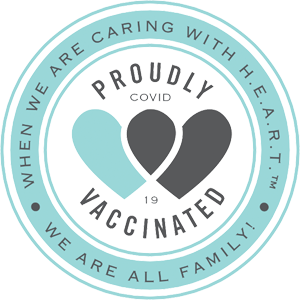Many seniors believe that low vision is just a sign of aging, but often symptoms are signs of more serious yet treatable conditions. Identifying symptoms early on can help stop or prevent the progression of these diseases, allowing you to keep your vision quality at its best for as long as possible. Understanding what can cause these diseases may even help you to avoid them altogether.
Three Common Diseases
The three most common diseases seen in senior patients are Macular Degeneration, Cataracts, and Glaucoma. Each of these diseases presents a different set of symptoms and effects and knowing the difference between them will guide you to the proper treatment.
Cataracts
Around the age of 40, clumps of protein may begin to form in the lens of the eye, making it cloudy. This loss of vision cannot be corrected with glasses or contact lenses. Once a cataract has formed, it can only be removed surgically. This generally painless procedure “vacuums” out the clumped particles, and then an artificial lens is inserted. Often you may have a choice of monofocal or premium lenses, and your vision may be dramatically improved.
Macular Degeneration
Recurrent damage to the macula, a tiny area near the center of the retina, destroys your central vision and the ability to see fine print or do detailed work with your hands. After age 50, this condition is referred to as age-related macular degeneration (AMD).
Often referred to as “dry” and “wet”, AMD appears in two ways. The dry form usually develops slowly over several years. About 10% of these cases will progress to the wet form, a more aggressive expression of the disease that involves blood and fluid leaking from the macula. This form can cause vision loss within weeks or months.
While there is no cure for AMD, there are antibody therapies and high potency antioxidant vitamin and mineral supplements that the National Eye Institute recommends. These treatments are helpful for those with advanced AMD.
Glaucoma
Modern researchers consider glaucoma to be a neurological disorder stemming from nerve cell degeneration in the brain rather than defining it as an eye disease. In the past, treatment focused on lowering pressure in the eye, which was thought to be associated with the damage caused by the disease.
Untreated, glaucoma can result in blindness. A surprising number of people with the disease are not aware that they have it. There are relatively few symptoms and they are often not perceived by the patient due to the very slow progression. Damage is most often restricted to peripheral vision in the early stages, making it easy to ignore. Current treatments include eye drops and surgeries to promote proper circulation in the eye. Some experimental options are also being used.
Protect Your Eye Health
Many of the diseases that contribute to low vision in seniors are hard to treat or reverse once they have begun to present symptoms, but there are things you can do to prevent eye-related illness in the first place:
- Don’t Smoke Smokers are especially prone to diseases affecting the eyes, commonly showing early signs of cataracts, and are more likely to suffer from age-related macular degeneration.
- Balance Your Diet A nutritious diet that includes spinach, walnuts, salmon and berries have high antioxidant levels that can prevent and slow the progression of eye diseases.
- You Gotta Wear Shades Protecting your eyes from the sun and from UV rays can help you to avoid developing cataracts and prevent damage to the retina.
- See Your Doctor Keep up a regular schedule with your optometrist. While in your 40s, you will want to visit your doctor every 2-4 years, while seniors over 55 should plan for an examination every 1-3 years, and perhaps more often as you pass 65.
Keep an eye on your vision and watch out for symptoms to keep your eyes healthy for as long as possible!





